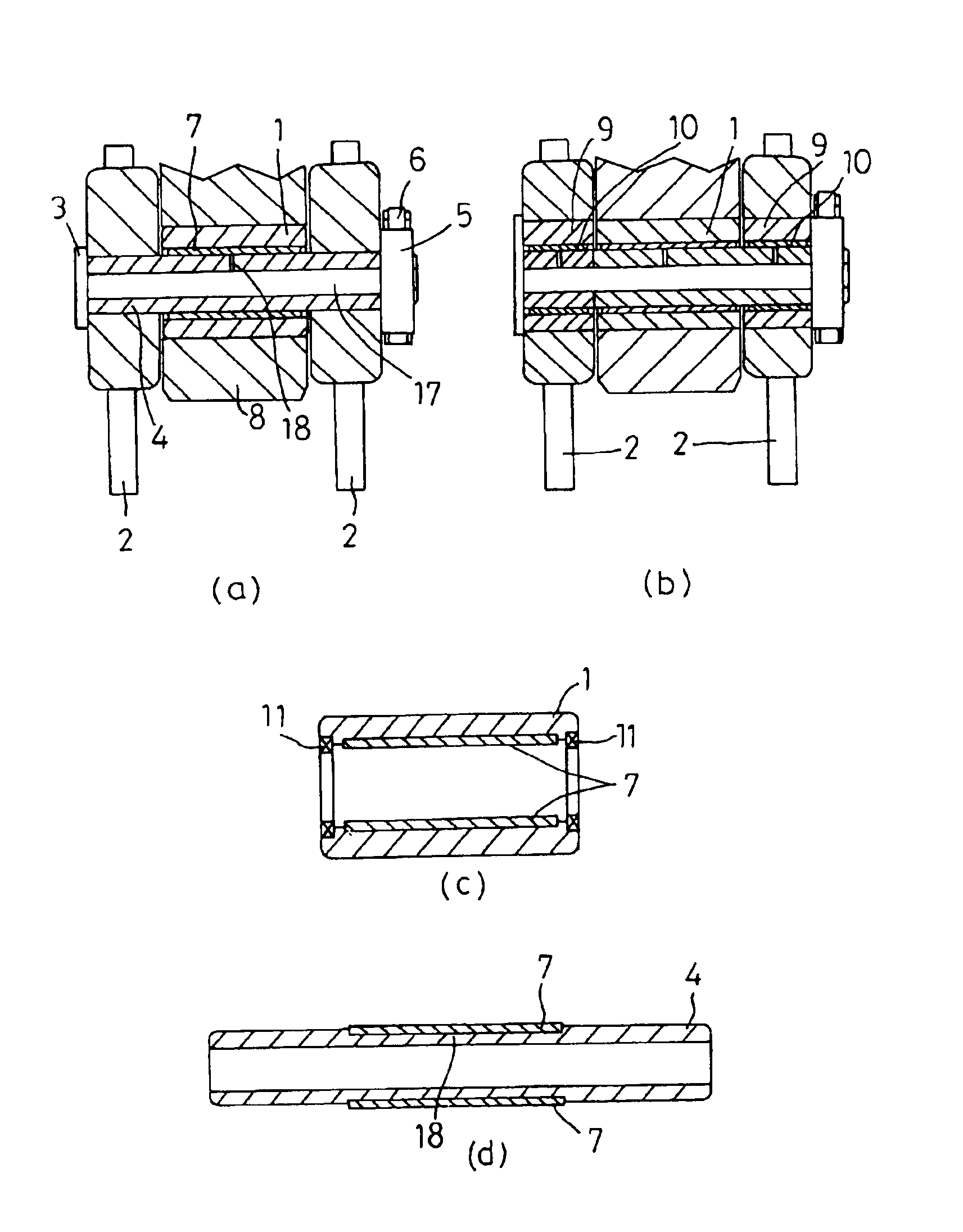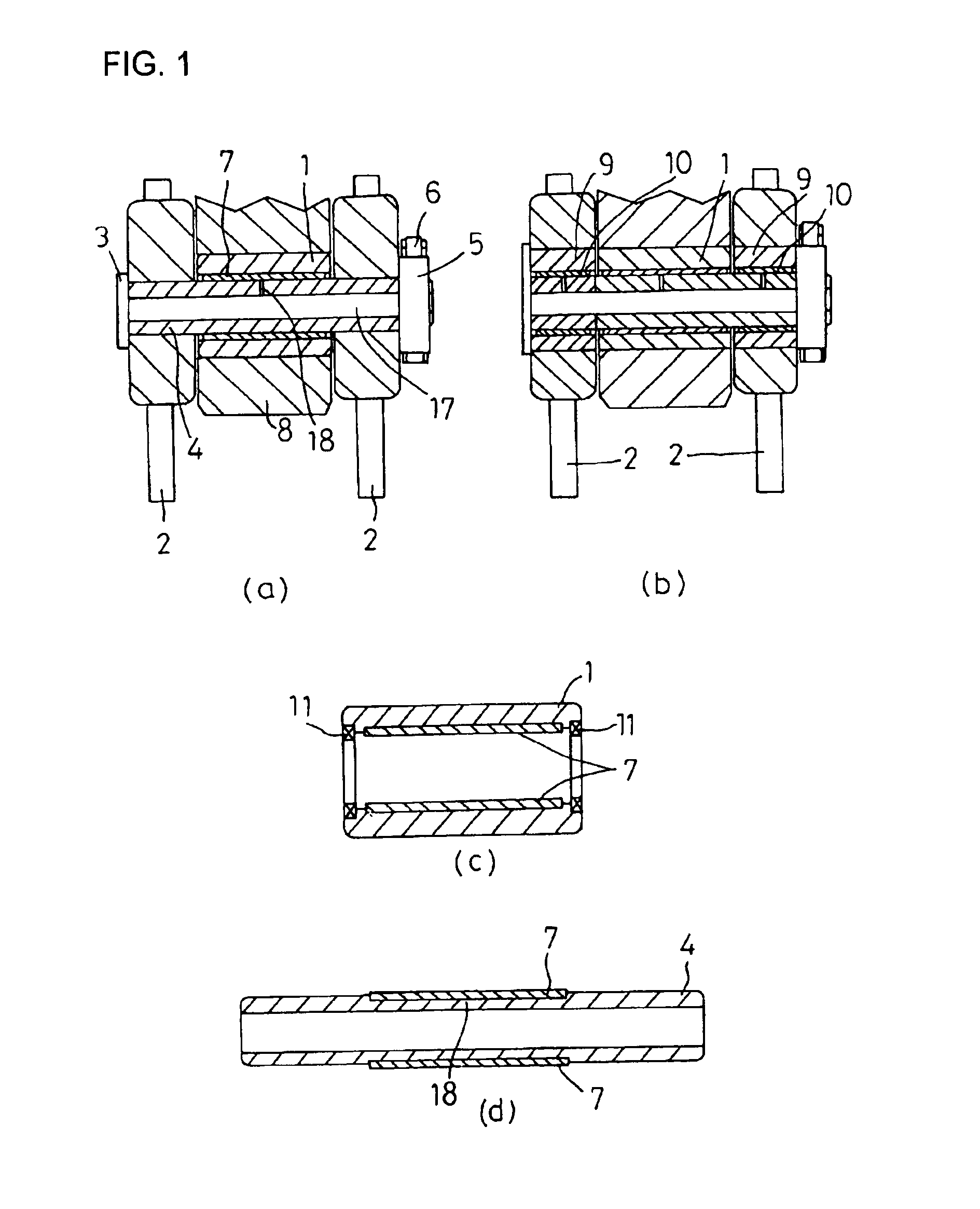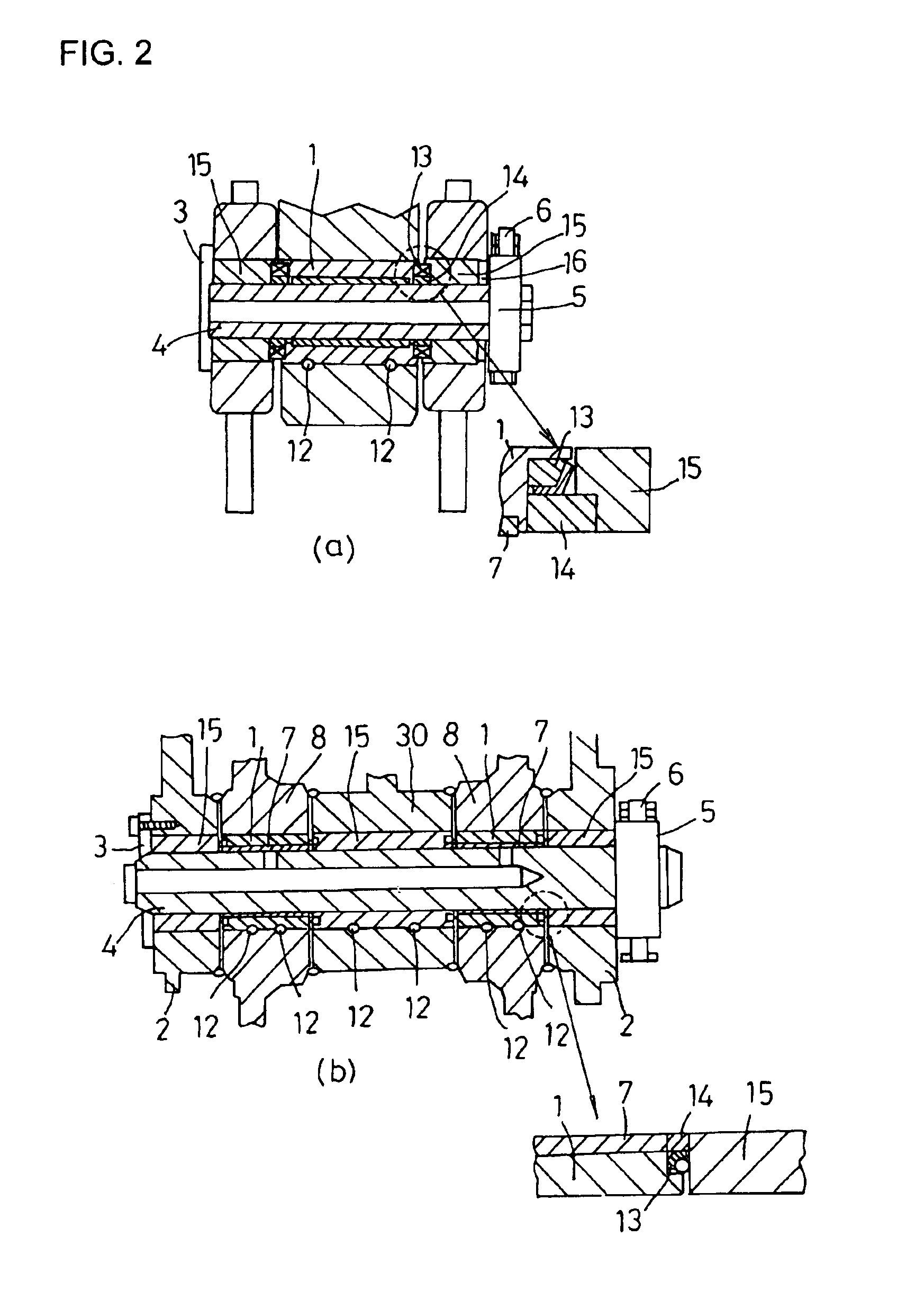Coupling device for equipment implement
- Summary
- Abstract
- Description
- Claims
- Application Information
AI Technical Summary
Benefits of technology
Problems solved by technology
Method used
Image
Examples
example 1
Measurement of a Stress Imposed on an Implement Pin of an Actual Vehicle
[0105]In this example, the construction equipment PC 300 produced by KOMATSU LTD. was used and a cylinder axial force at the bottom of a bucket cylinder and a bending stress imposed on an implement pin for the bucket cylinder was measured using strain gages. It is known that the severest load is applied to the bottom of a bucket cylinder during operation when the angle of the face cutting stroke end arm is 90°. FIG. 4 shows loads calculated from the axial force and the measurement results of the bending stress imposed on the outer circumference (φ 90 mm) of a solid implement pin. The maximum load and the maximum stress imposed on the outer circumference of the solid implement pin were 170.9 ton and 23 kg / mm2, respectively. The problem of breakage caused by radial squeezing becomes serious as mentioned earlier where the cylindrical implement pin is too thin, and therefore, Z is set to 0.6 or more and the thicknes...
example 2
Breakage of an Implement Pin Caused by Radial Squeezing Fatigue
[0106]In this example, the outside diameter and length of an implement pin were set to 60 mm and 140 mm, respectively, and the inner diameter was varied such that the thickness to outside diameter ratio takes values of 0.175, 0.145 and 0.1. Such an implement pin was mounted on a jig as shown in FIG. 10 to undergo a fatigue test. A research was made to check the effect of the hardness of the inner circumference of the implement pin on the strength against breakage which is caused by a radial squeezing tensile stress, starting from the inner circumference. Samples of three levels were prepared for the implement busing. (i) Level 1: An S45C carbon steel pipe was used and its outer circumferential surface and inner circumferential surface were quenched by induction hardening such that the hardened depth of the area having a hardness of HRC 45 was about 3 mm. Then, tempering at 180° C. was carried out for 3 hours (the hardnes...
example 3
Production of a Cu—Al Based Sintered Plate and Sliding Test Results
[0112]The mixed powders shown in Table 1 were prepared by blending an Al powder, Sn powder, TiH powder, Si powder, Mn powder, Ni powder, phosphor iron powder, and electrolytic copper powder (CE15 produced by Fukuda Metal Foil & Powder Co., Ltd.) which had a size of 300 meshes or less. These powders were compacted at a compacting pressure of 4 ton / cm2, using a die for tensile tests. This die is stipulated by JIS and shown in FIG. 15. After sintered at 850° C., 900° C., and 960° C. under a pressure of 0.01 torr in a vacuum sintering furnace for one hour, these compact specimens were rolled to such a degree that they were not cracked and, subsequently, resintered at the same temperatures for one hour. The hardness of each specimen (2S1R material) thus prepared was measured. Further, the sliding properties of each specimen were evaluated by measuring its seizure limit value (PV value) and wear amount (Δ Wmm) at the seizu...
PUM
 Login to View More
Login to View More Abstract
Description
Claims
Application Information
 Login to View More
Login to View More - R&D
- Intellectual Property
- Life Sciences
- Materials
- Tech Scout
- Unparalleled Data Quality
- Higher Quality Content
- 60% Fewer Hallucinations
Browse by: Latest US Patents, China's latest patents, Technical Efficacy Thesaurus, Application Domain, Technology Topic, Popular Technical Reports.
© 2025 PatSnap. All rights reserved.Legal|Privacy policy|Modern Slavery Act Transparency Statement|Sitemap|About US| Contact US: help@patsnap.com



